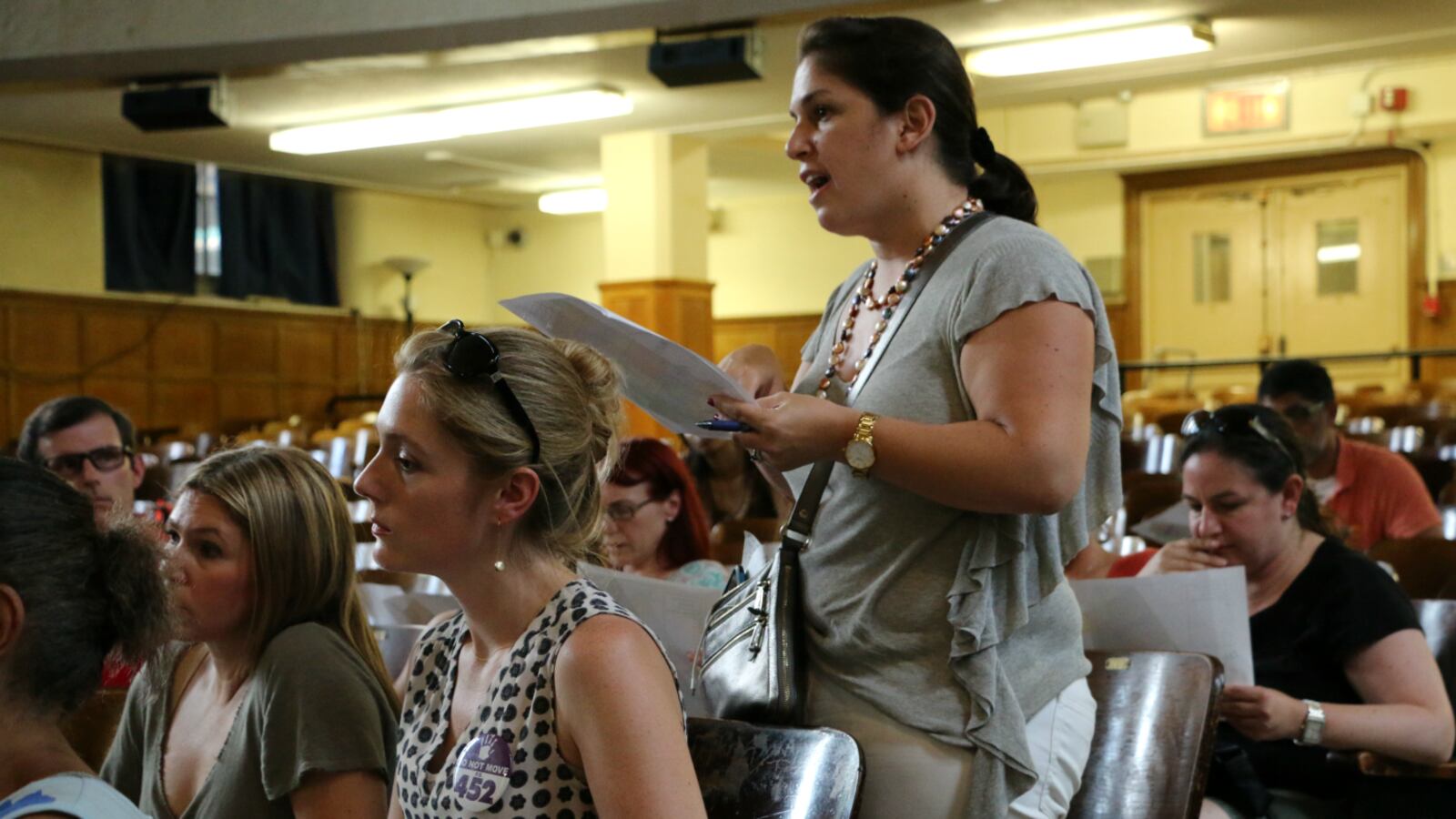When New York City officials first proposed rezoning some schools on the Upper West Side last fall, they said they were trying to address overcrowding.
Department of Education officials offered another rationale Thursday when they unveiled a more dramatic proposal to overhaul how students are assigned to schools: Rezoning can help the neighborhood’s schools grow less segregated.
The latest plan, which would redistribute the students who live in a public-housing development among three schools, provides a clear sign that the city is paying new attention to the extensive race and class segregation among its schools. It also threatens to reignite opposition from affluent parents whose children could have to travel farther to attend school with more poor children.
“We have a real opportunity here to equalize the percentage” of low-income students, said Sarah Turchin, the department’s director of planning for Manhattan, “and work towards our goals at the DOE to integrate our schools in the city and District 3.”
Officials presented two possible plans, both of which would substantially alter the share of low-income students at several schools: P.S. 191, P.S. 199, and potentially P.S. 452. If the plans are adopted, officials project that the share of poor students at P.S. 199 and P.S. 452 could more than double over time — from less than 10 percent at each school up to 20 percent. Meanwhile, P.S. 191, which currently serves the bulk of students from the Amsterdam public-housing development, could see its low-income population plummet from 49 to 20 percent.
The city tabled its proposal last fall after affluent parents zoned for P.S. 199 rallied against the prospect of having to attend the much lower-performing P.S. 191. Officials on Thursday said they had not yet decided whether to move forward with the latest plans, but if they do, they are likely to reignite those parents’ opposition.
Meanwhile, even greater uncertainty surrounds P.S. 452, a relatively new school that is whiter and more affluent than the district average.
One plan the city presented would move that school 16 blocks south into the building now occupied by P.S. 191. Because its new zone would include part of the public-housing complex, its share of students who receive free or subsidized lunch would increase from 10 percent to as high as 20 percent, officials estimated. But the second plan officials floated would leave P.S. 452 in place and open a new school in the building of P.S. 191, which would move a few blocks west into a new building.
Both plans would alter the zone around P.S. 452. However, while it is clear that a move would boost the school’s socioeconomic diversity, it is less clear that will happen if it remains in its current location. That potentially sets up a stark choice for the many parents at P.S. 452 who have vocally opposed the move on the grounds that it would lengthen their commute and disrupt their school community: Will they continue to rally against it even if that means preventing their school from becoming more diverse?
After the meeting, which attracted such a large crowd that it was moved from a classroom to a school auditorium, P.S. 452 parent Mike McCarthy pointed out that either plan would address overcrowding at P.S. 199 and reduce the clustering of low-income students at P.S. 191.
“If either scenario does what the district wants,” he said, “then why are you going to ask a whole school to pick up and move?”
Even as the proposals held out the potential of better integrating a few schools, advocates at Thursday’s meeting called on the city to go further.
Pointing out the deep race and class divisions between many of the district’s schools, they asked why the city was not pursuing a district-wide integration plan. Some parents, educators, and members of the education council have proposed erasing the district’s zones entirely and adopting a “controlled choice” enrollment system. That system would let families apply to any schools in the district, then would assign them to schools based on their preferences and their demographic information, with the goal of more evenly spreading high-needs students across the schools.
Kimberly Watkins, the education council’s zoning committee chair, told a controlled-choice proponent on Thursday that she “believe[s] in what you’re doing,” but that plan raises many unanswered questions and would require “a great deal of planning and grassroots activism” before it can move forward.
That answer did not satisfy Lizabeth Sostre, a former teacher in the district who is part of a group pushing for a move to controlled choice. She said redrawing the zone lines around just a few schools amounted to “tinkering.”
“We can change the lines, but are we really addressing systemic racism and segregation in our district?” she said after the meeting. “We’re not.”

